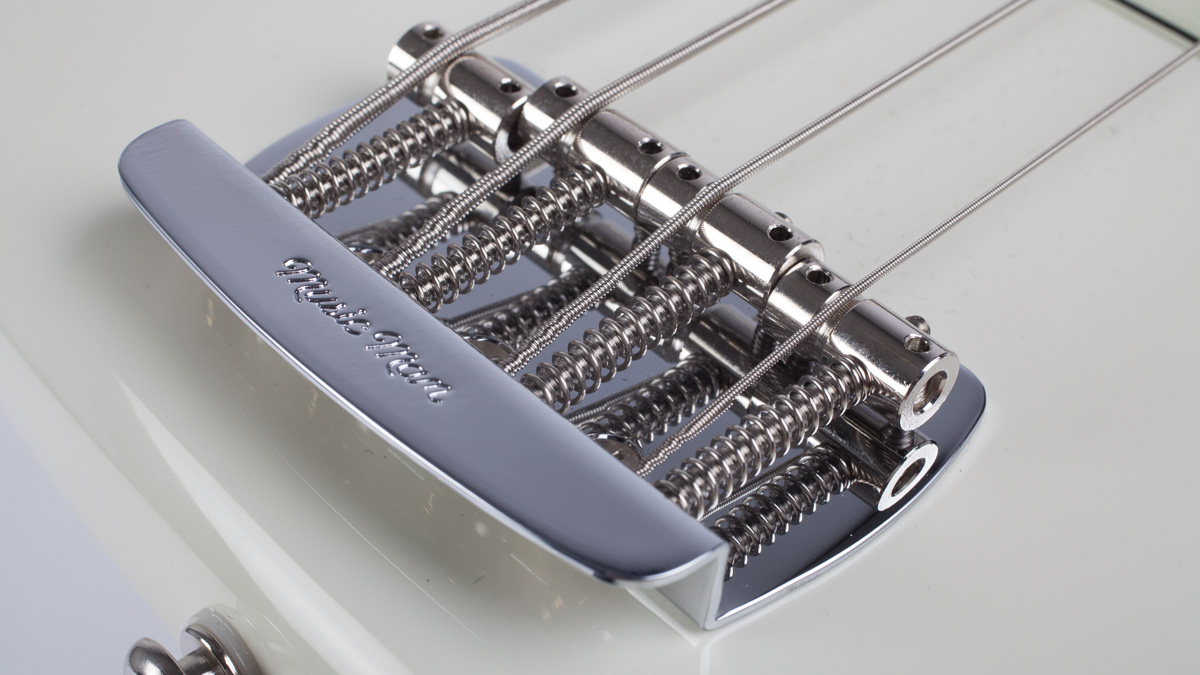MusicRadar Verdict
A worthy addition to the Music Man range that carries all the hallmarks you would expect in a 'plug and play' package.
Pros
- +
Strong, passive split-coil tones, great playability and the Music Man reputation.
Cons
- -
High price tag, limited tonal options.
MusicRadar's got your back

Ernie Ball Music Man Cutlass

Ernie Ball Music Man Cutlass
Two new passive Music Man basses are about to hit our shores.
The Caprice and the Cutlass (not to be confused with the graphite-necked Stingray variant) are now available, and whether they are designed to take on the perennial Fender favourites is open to conjecture - but here they now are. If simplicity and 'plug and play' are your cup of tea, look no further!
Build Quality
It's a given that a Music Man bass will be built to a certain standard, capable of taking on heavy gigging and the rigours of the road - and first impressions are that the Cutlass is built from the same mould and comes with classic, vintage looks. The body shape catches the eye as being a little different, but it sits wonderfully against the player's body. The rear contouring is well placed and there is very little headstock bias in the balance stakes.
If comfort and playability are high on your list of buying criteria, look no further. It has a played-in feel, despite being brand new, and the neck finish is an ultra-light satin polyurethane, while the body has been treated with a high gloss polyester lacquer that shows the ivory white finish off remarkably well, the mint three-ply pickguard offering some contrast.
Take the renowned Music Man tone characteristics, create a Precision-like passive bass and fuse the two together. This is the result, and it doesn't take any prisoners!
The shallow C-shaped neck profile is very comfortable and provides enough depth to give players of a heavier playing persuasion something to grab hold of, while being slim enough not to inhibit those who don't want to have to fight against a neck. If anything, the neck is very similar to a Sterling (the bass model, not the brand) neck, with its tighter string spacing, compared to a Stingray for example.
The maple fingerboard has a warm blonde hue, with black position markers fitted on the front and side. The truss rod adjuster is situated at the base of the neck, as is now de rigueur on MM basses. The pickup casing is rounded with no sharp edges, the large pole magnets of the split-coil humbucking pickup standing out like a statement of intent.
The volume and tone controls operate smoothly with a gradual change in the volume and tone through the whole turn of each pot, the Schaller tuners functioning just as effectively, feeling sturdy and smooth during operation. The bridge is a simple affair: simplicity and ease of operation seems to have been the main design premise for this bass and it works.
Sounds
Take the renowned Music Man tone characteristics, create a Precision-like passive bass and fuse the two together. This is the result, and it doesn't take any prisoners! The tonal delivery is strong and punchy and although the single pickup might seem like a limitation to some players, the fact that this is a great sounding bass with a wonderfully comfortable neck and body illustrates how good a bass can be if you get the basic elements right.
All the classic split-coil tones are there, from vintage thump in the bass and low-mid registers, to a plummy rounded fingerstyle tone.
Open the tone control up and you instantly get some light and shade: the string attack when using a pick is old-school rock, pure and simple, while the slap tone harks back to a time when most of the slap lines you heard on recordings were played on a Precision.
In terms of playability, this bass is a real winner. There is something about the dimensions, balance and profile that ticks all the boxes, and the fact that the tonal display is equally enjoyable would indicate that passive bass fans now have a new option to consider when purchasing their next instrument.
Those clever people over in San Luis Obispo have obviously taken their time over the design and sound of this bass. There will inevitably be those that say they're simply trying to take on the Fender Precision, but to be honest, it's probably a little late in the day for that.
The price tag is a touch prohibitive, and only time will tell if the public are willing to spend this sort of money on a passive bass like this. However, we're sure that many players will be happy to have a passive Music Man. We certainly enjoyed playing it.
“I got a call saying, ‘Robert Plant is going to call you.’ What?!”: How Alison Krauss made sweet music with the Led Zeppelin legend
How we test digital pianos
Zak Starkey is back in The Who. “I take responsibility for some of the confusion… Zak made a few mistakes and he has apologised”, says Pete Townshend









